Sitting All Day at Work? Make Time for Stretching!
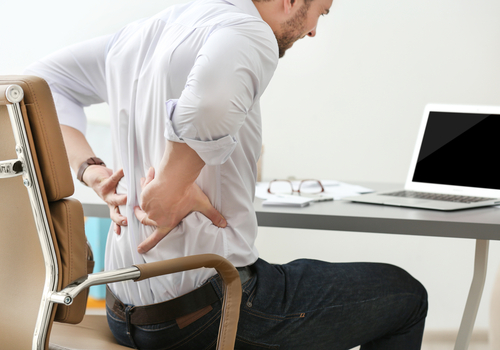
Does your job require you to sit at a desk all day?
Do you notice lower back pain after a day at the office?
If you sit for a living you must do this stretch every day!
There is a plethora of research out about the downside to sitting and the long term effects it has on our body. Many companies now understand that sitting all day causes a myriad of problems; not just neck and back pain but also low metabolism, obesity, diabetes, and breathing problems. As a result they are beginning to provide their employees with standing desks. However, this alone can't undo or fix the damage caused by chronic sitting.
You might be wondering how sitting can wreak havoc on your body. When you sit, your hips flex to a 90-degree angle, shortening your psoas muscles (AKA hip flexors) and lengthening your gluteus muscles. Why are these muscles so important? Every time you lift your leg or try to walk, your psoas and gluteus muscles have to work together. The psoas attaches on the front of your lumbar spine deep behind your belly button and intestines, and the other end attaches on the inside of the femur (thigh bone) in the area of the groin. When the psoas contracts, it flexes the hip and when the gluteus muscles contract they extend and rotate the hip outward. When we sit for long periods of time, even 30 minutes, we create an imbalance between these two muscles.
Here's how it works
To understand this imbalance, let's discuss what happens when a muscle is shortened or lengthened. Muscles that are kept in a shorted position for an extended period of time will adapt. Like breaking in a new pair of shoes, at first it seems weird and uncomfortable, but after a while you get used to it. So as the muscle adapts to this shortened position it actually becomes shorter in length over time. Shortened muscles can be spastic, tight, and painful.
What does this have to do with the psoas (hip flexor)? Well, when we sit for 7-9 hours a day at work, we put our hip flexors in a chronically shortened position. This will actually shorten our hip flexors. Then, when we stand up, these shortened hip flexors can hyperextend our low back and torque our spine. This is one reason why a lot of people have trouble standing for an extended period of time. On the other hand, when a muscle is in a chronic state of lengthening, it becomes relaxed and weak. Think of it this way: if your hamstrings are tight and youstretch them for 1-2 minutes, they will feel more relaxed and loose. This is what happens to the gluteus muscles during chronic sitting. Over time they get weaker.
What to do about it:
First, be aware of how much you're sitting. We sit at the table eating breakfast, then we sit in the car and drive to work, then we sit down at our desk for the next 6-8 hours. At the end of the day we drive home, then sit on a couch or at our home office. It's easy to see that most of us sit for the better part of every day. How do we counteract this? Take short breaks every 1-2 hours for 3-5 minutes! Get up and do some activity to stretch your psoas (hip flexors) and activate your gluteus muscles.
Stretching the psoas is simple and you should do it 2-3 minutes on each side. Get down on the floor of your office. If the flooring is a hard, use a pillow or roll up a sweatshirt or jacket to use as padding. Place one knee on the floor and place the opposite foot in front of you. Glide your hips forward until you feel a stretch in the front of the thigh with your knee on the floor. Glide further until you feel a stretch in the front of your hip and lower abdomen. You are now stretching your psoas. Repeat on the opposite side.
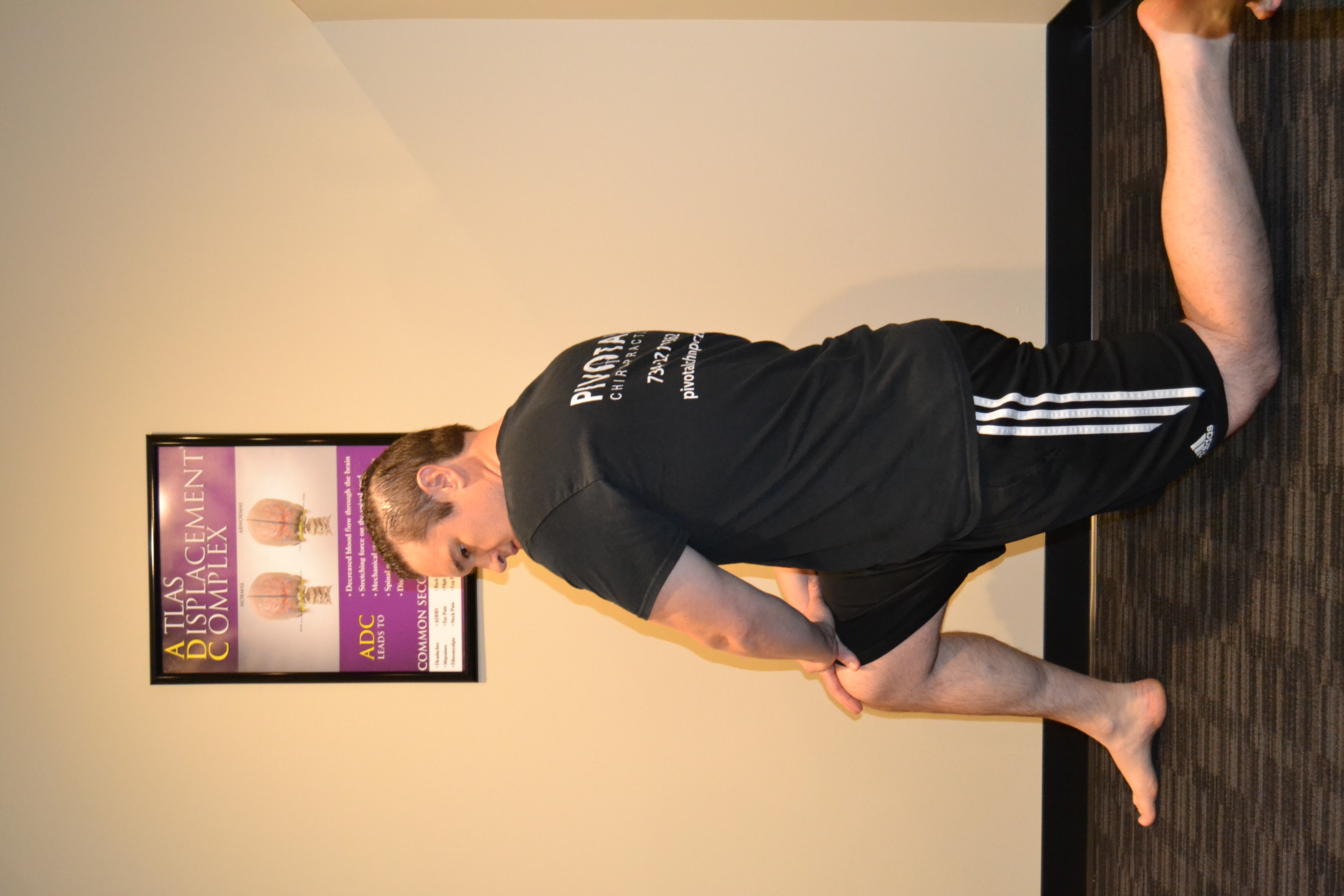
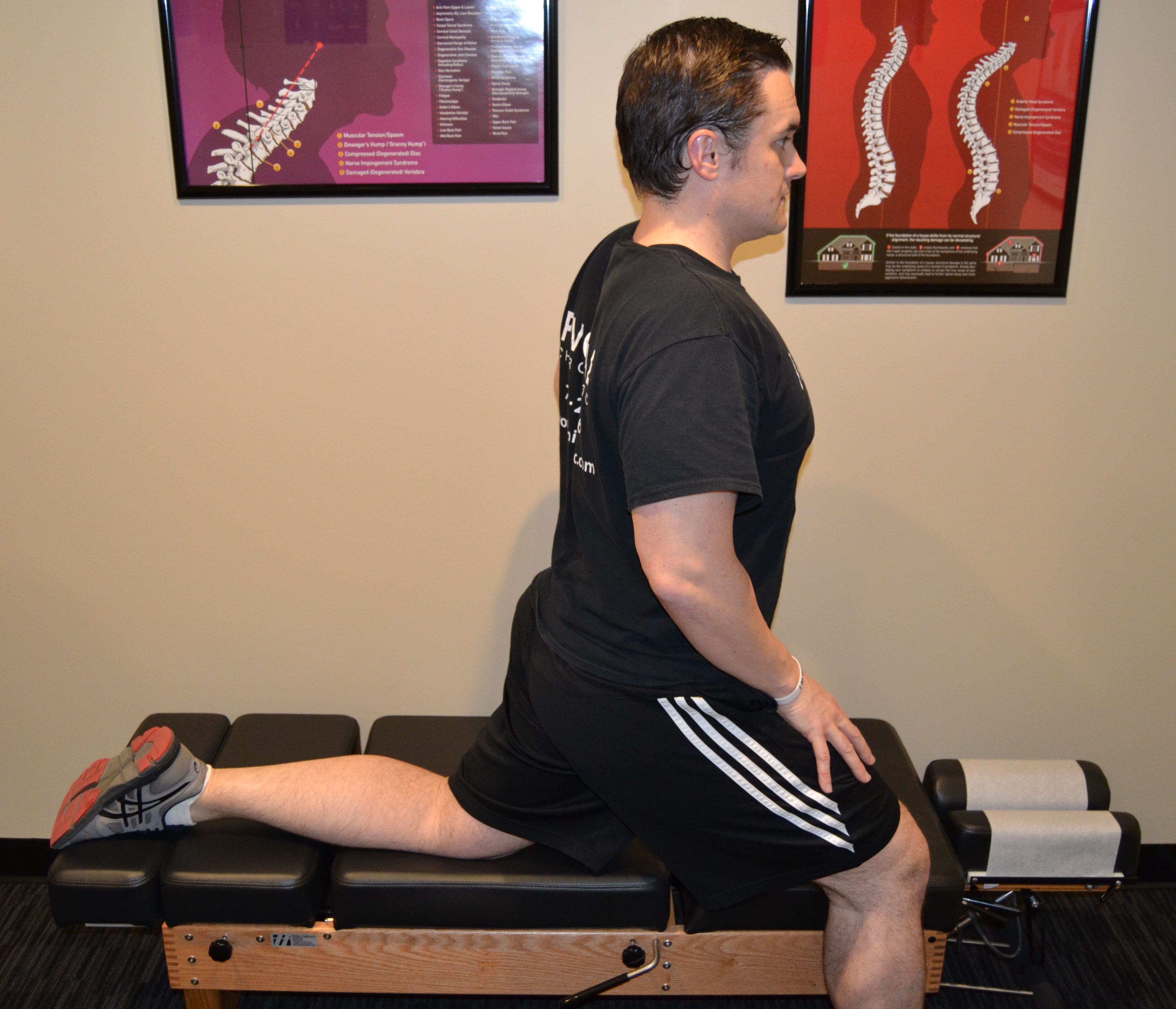
If you don't feel comfortable on the floor or you have bad knees, you can use the edge of your couch. In the standing position, place one knee up on the couch, take a step forward with the opposite leg and glide the hips forward until you feel the stretch in the front of the thigh, hip, and lower abdomen.
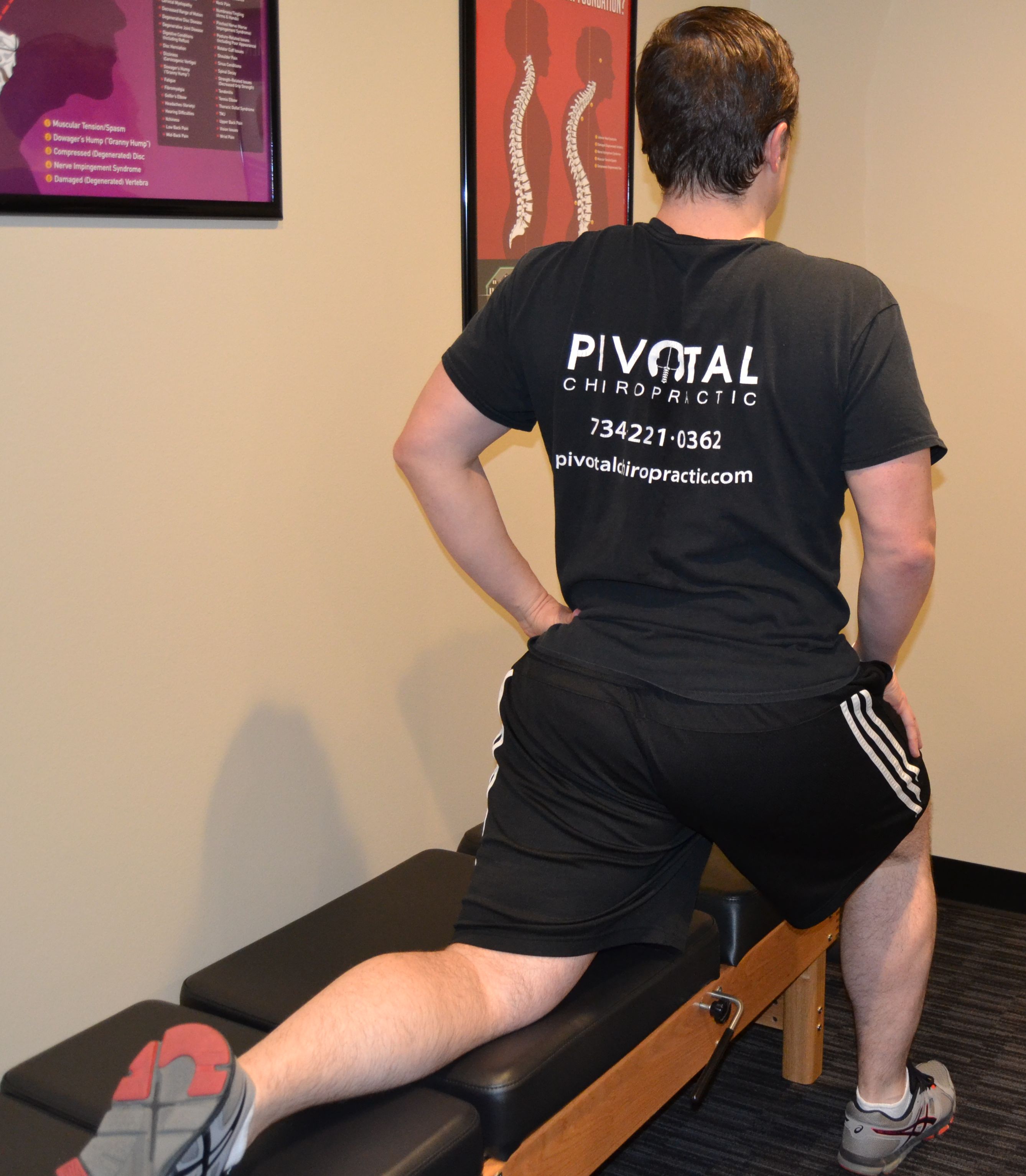
The next movement we need to do is activate the gluteus muscles. The simplest way to do this is by squatting. Stand in a neutral position with your feet shoulder width apart. Squat down until your thighs are parallel with the floor. Make sure your knees stay behind your toes. If this movement irritates your knees, go down to above parallel, hold this position for 2 seconds, and then stand back up. Make sure to squeeze and flex the gluteus muscles when you come all the way up. If you have trouble with balance you can hold onto the back of a chair.
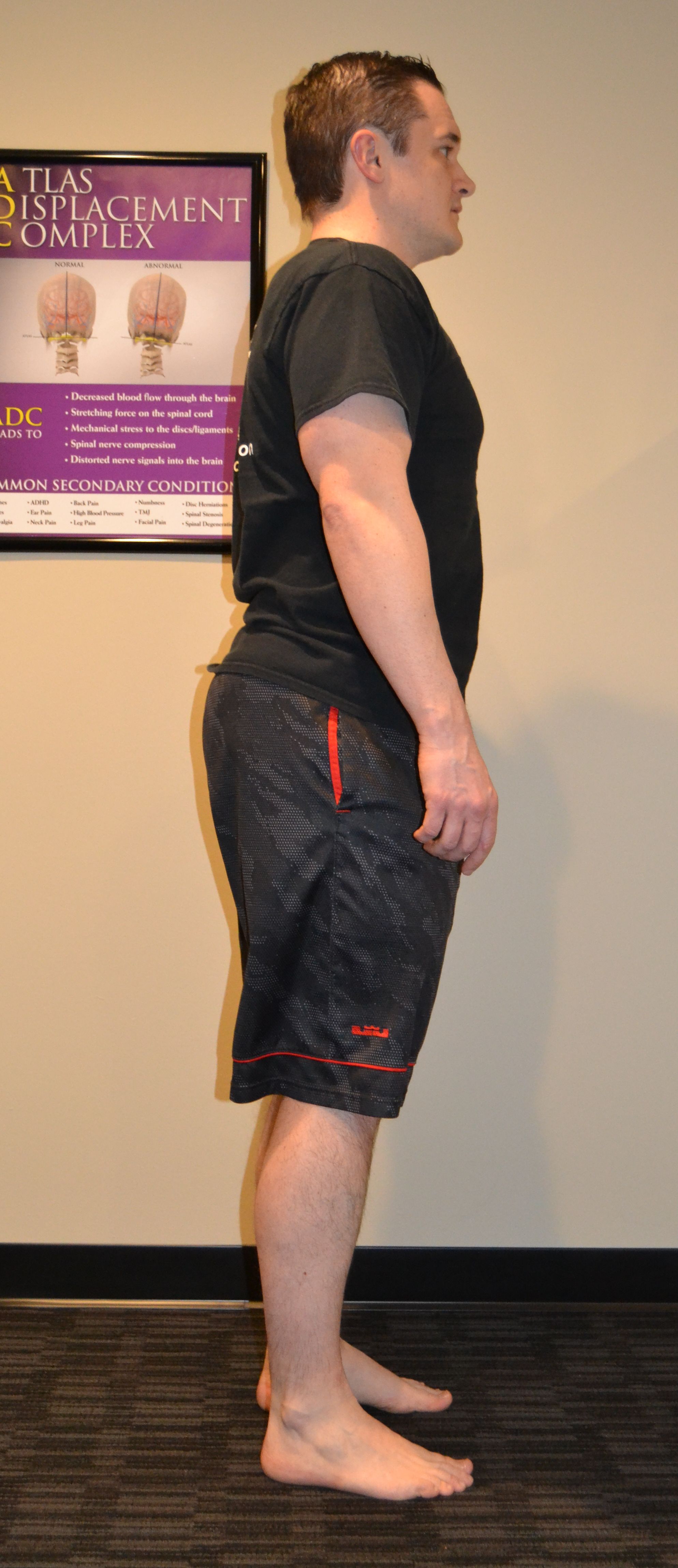
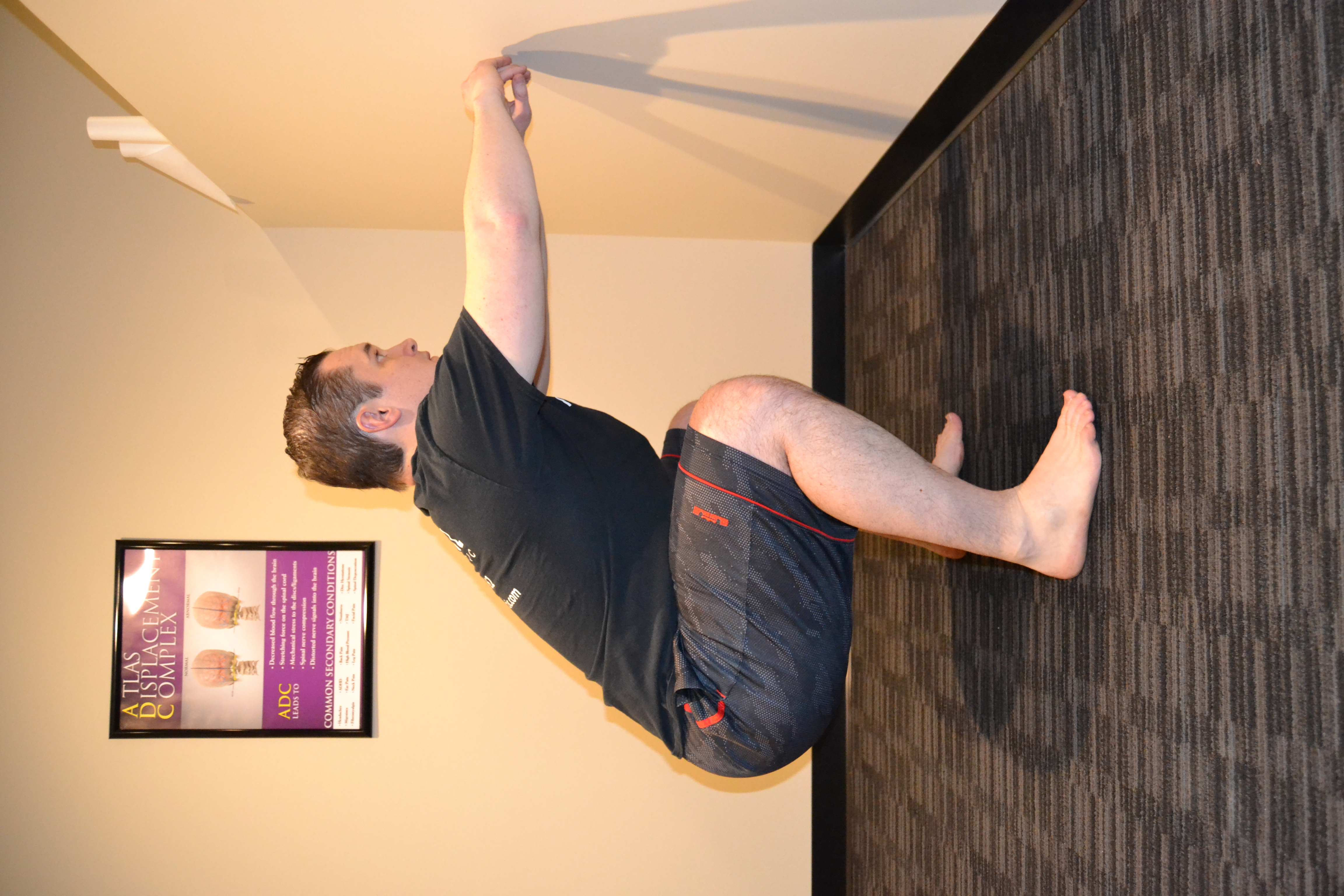
Need Relief for Upper Back or Lower Back Pain?
If you have to sit for the majority of your workday, we know getting relief isn't easy. You can't just quit your job, and sometimes it can be difficult to find the time to stretch, take a break, or exercise.
Regular visits to the chiropractor can help relieve your pain! Make the time in your schedule to see a chiropractor and see how adjustments can help you get rid of pesky twinges and aches, and even more serious levels of pain and discomfort. Contact Dr. Gessert today to get started!






